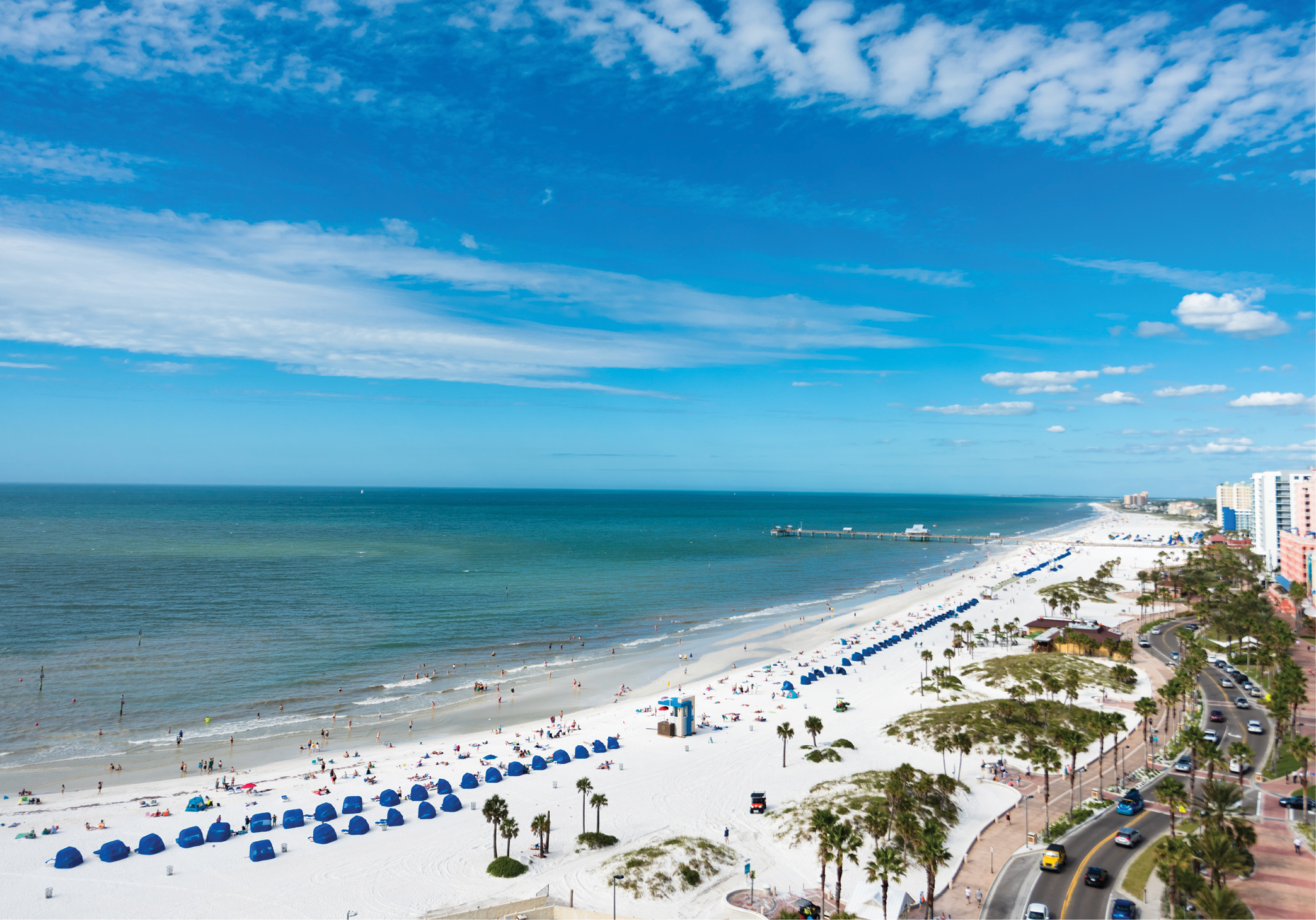The last time you conducted a site search for your company, did you ask yourself and your team, “Where do our customers want us to be?”
The question is intriguing for several reasons. First, it doesn’t typically appear on a site selection checklist. Secondly, it presumes that your customers may understand your company’s value more than you do; and thirdly, it requires talking and listening to your customers before making a location decision.
Jack Daly, Joseph Castonguay and Victor Lozinski did that, and all three decided to move their businesses from California to Florida.
First, a disclaimer: This does not mean that they dislike California. Each has a history of doing business there and admits that the Golden State played a pivotal role in forming and shaping their business. But in each case, they say, moving to Florida is essential if they want to grow.
In interviews with Site Selection, these three business leaders spoke candidly about their experiences in California and Florida. Here are their stories.
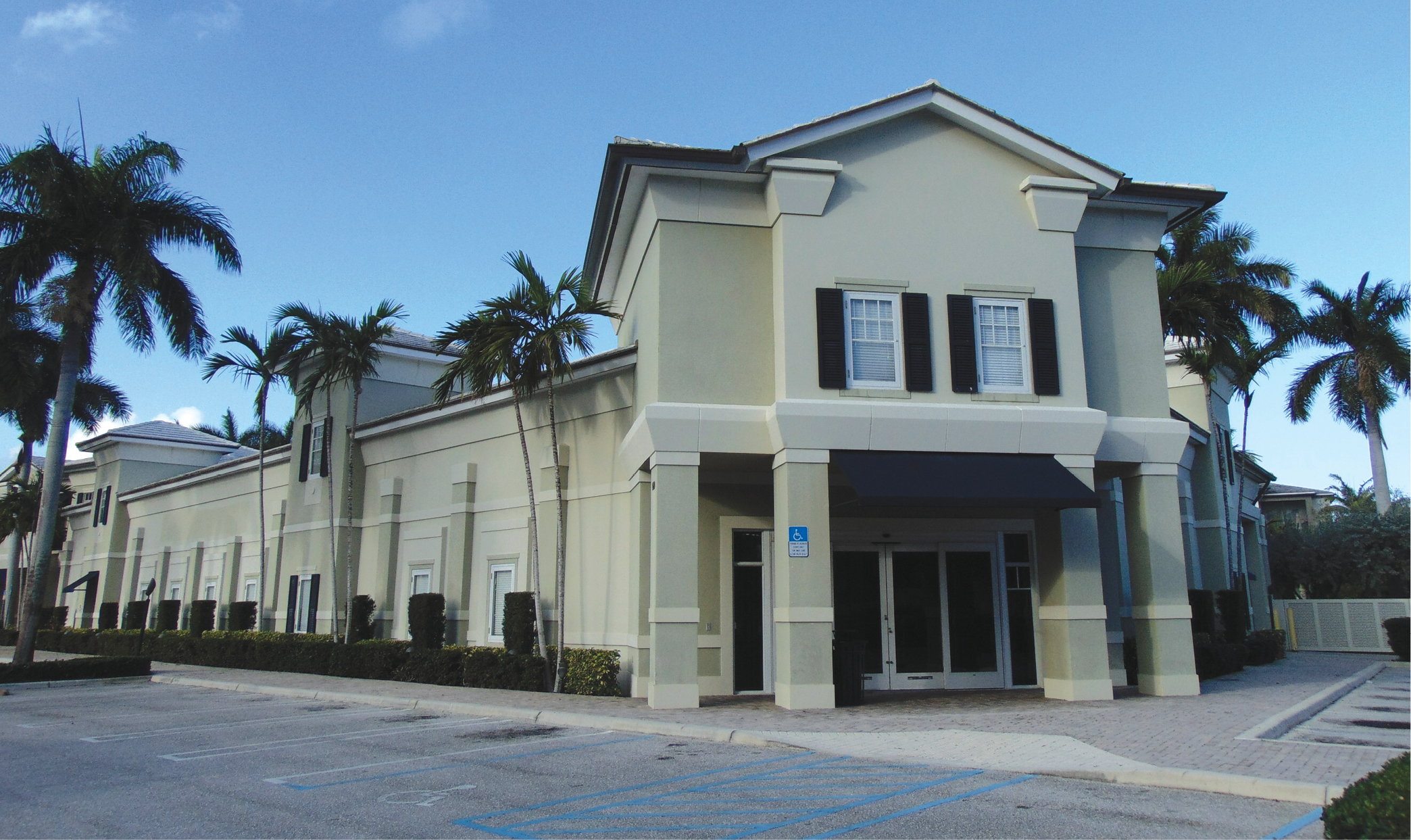
TRX’s new headquarters in Delray Beach, Florida.
The Fitness Fanatic
Take one look at Jack Daly and you’d think he’s a professional athlete. He is fit, athletic, trim, square-jawed and looks like he could play professional baseball. He’s actually an investment banker.
After spending 25 years on Wall Street as a partner at Goldman Sachs, he became a partner at TPG Capital. It gave him the opportunity to acquire TRX, a fitness equipment and training company that was launched by former Navy SEAL Randy Hetrick in California in 2004.
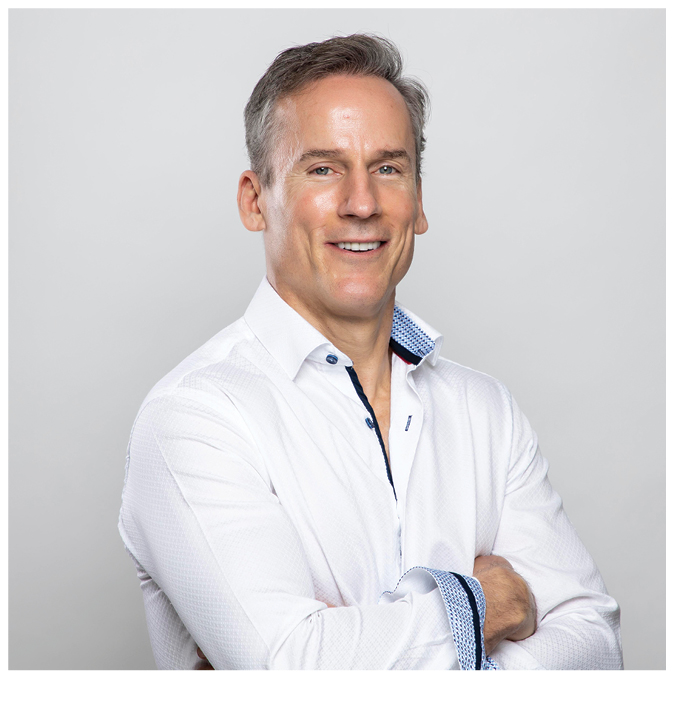
Jack Daly, CEO of TRX
Photos courtesy of TRX
On March 8 of this year, now CEO Daly and Hetrick announced they were moving the business from San Francisco to Delray Beach, a waterfront community about 30 minutes north of Fort Lauderdale.
“I grew up in Pittsburgh, spent most of my career in New York City where my wife and I raised our three boys, and spent several years in San Francisco,” says Daly. “We have experienced the best and worst of large urban living and believe Southeast Florida provides the best balance of very high quality of life with lots of fun things to do while also providing the best safety and security that has been lost in most major cities.”
After moving his family to Delray Beach two years ago, Daly said that TRX customers will love the corporate move for two reasons: It makes their travel to TRX headquarters much easier, and they will like what they see when they visit.
“Delray Beach strikes the perfect balance as an easily accessible destination between PBI [Palm Beach International Airport] and FLL [Fort Lauderdale International Airport], affordable cost of living and thriving culture,” Daly says. “The town leadership has done a great job developing the vibrant community while also thoughtfully developing the business and commercial interests that benefit the entire community. My wife and I ride our bikes to Atlantic Avenue where there’s such a unique energy to enjoy. You just don’t get that in some of the larger markets. It all feels right for our vision for the future of TRX, and the culture we want our global visitors to experience when they visit in the future.”
The community he now calls home passed every business test, says Daly. “Delray Beach offers an attractive combination of business-friendly environment, high quality of living, strong work ethic and vibrant fitness culture,” he notes. “We are bringing high-quality fitness technology jobs to the capable workforce in Southeast Florida.”
“It all feels right for our vision for the future of TRX, and the culture we want our global visitors to experience when they visit in the future.”
— Jack Daly, CEO, TRX, on why he chose Delray Beach
TRX worked with Ingrid Kennemer of Coastal Commercial Group to find a 12,000-sq.-ft. facility that will house 40 corporate staff and trainers. Even though Daly ran businesses that were based in New York, Chicago and San Francisco, he said he “really only considered Florida.”
With business interests in the U.S., Canada, Latin America, Europe, Japan and across Asia, the new Southeast Florida home places TRX in a time zone that is conducive to interacting with clients on both sides of the Atlantic. TRX boasts a global network of 250,000 certified trainers. “As we grow our products, services and app, we will continue to grow our presence around the world,” says Daly.
The Automation Accelerator
Joseph Castonguay, president of Autoslide North America, a producer of automatic door systems, says his company’s move from Glendale in Southern California to Tampa on west central Florida’s Gulf Coast was driven by customers.
“Getting our customers to come out there was hard. No one wanted to go to California. It was pulling like pulling teeth to get people to travel to California for meetings, training, events, etc.,” he says. “So, with most of our clients being located east of the Mississippi, it just made sense to move the business back to Tampa.” Better logistics appealed to Autoslide vendors too. “This is a great port here,” he says. “We import product from Australia and China, and Tampa International Airport is convenient to get in and out of. It just made a lot more sense for us to be in Tampa.”
The Sydney, Australia–based parent firm was founded 37 years ago and first came to America in 2013. Autoslide moved from Tampa to Burbank in 2017 before later settling in nearby Glendale. A variety of factors, however, prompted the firm to return to Tampa five years later.
“One, I never moved to California,” says Castonguay. “I had been commuting back and forth to California every month, which was not fun. Another reason is that financially, it makes sense. It is super expensive in California. Taxes are expensive. Square footage is much more expensive, and so are the utilities. And then labor is expensive out there, and it is not just the cost of salaries. There are a lot of regulations in California where you are required to provide different benefits depending on how many people you have and where you are located.”
Even hiring workers proved challenging. “Getting people to apply and to show up at work became difficult. So, that was just it,” he says. “We saw the handwriting on the wall and knew that we needed to make a change for the company.”
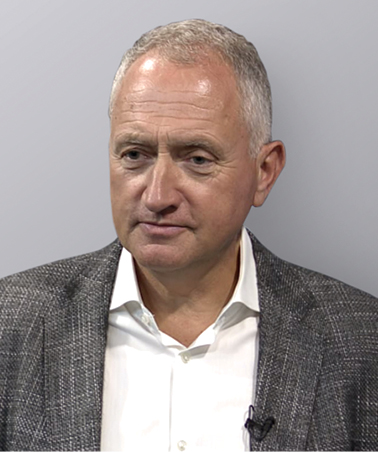
“It is difficult to be a global company and have a headquarters on the West Coast.”
— Dr. Victor Lozinski, President & CEO, LeverX
Autoslide is a small tech firm with about 12 people at the corporate headquarters, “but we have a network of over 200 dealers for of our products around the country,” says Castonguay.
“Is it cheaper here? Yes. The sales tax alone is a savings on everything you buy. In L.A., depending on what part of L.A. County you live in, it can be upwards of 10% sales tax out there. It’s just a lot better here in Tampa and it feels like it is safer here too. Here, you are not afraid to walk or bike somewhere. And our employees like the much shorter commute times too. They went from one-hour commutes in L.A. to about 20 to 25 minutes here in Tampa.”
The experience has been so positive in Florida, says Castonguay, that the firm is considering moving some production from China and Australia to Tampa. The company will grow, he says, and that expansion will occur in Florida.
The Eclectic European
Dr. Victor Lozinski, president and CEO of software engineering services firm LeverX, says there was a certain amount of “culture shock” in moving his company from Silicon Valley to Miami.
“In Silicon Valley, if you go to a meeting, you cannot be underdressed. In Miami, it is the opposite. You cannot be overdressed,” he says. “I am originally from Latvia in northeast Europe. I spent 10-plus years in Germany and attended universities there. I worked at the SAP headquarters in Germany and transferred to America in 1990. I spent eight years with SAP. My entire career is linked to SAP.”
Lozinski left SAP and joined four other co-founders in starting LeverX in 2003 in Mountain View, California, the hometown of Google.
“We have almost 1,600 people now. For a software company, that is exceptionally large,” he says. “We have offices in 10 countries, and we have two primary business lines. One is for SAP, and the second line is providing software engineering services for startups.”
Lozinski describes his company as a “combination of German engineering and a Silicon Valley way of doing business. Our fundamentals are German engineering with American innovation. We move fast.”
In February of this year, LeverX relocated its headquarters from the Bay Area to Miami. Lozinski explained his reasons for doing so.
“California is a great state. We are not unhappy there,” he says. “In the last five years, our business accelerated. The pandemic accelerated it, but 2021 was our best year ever. We benefited from the new remote environment.”
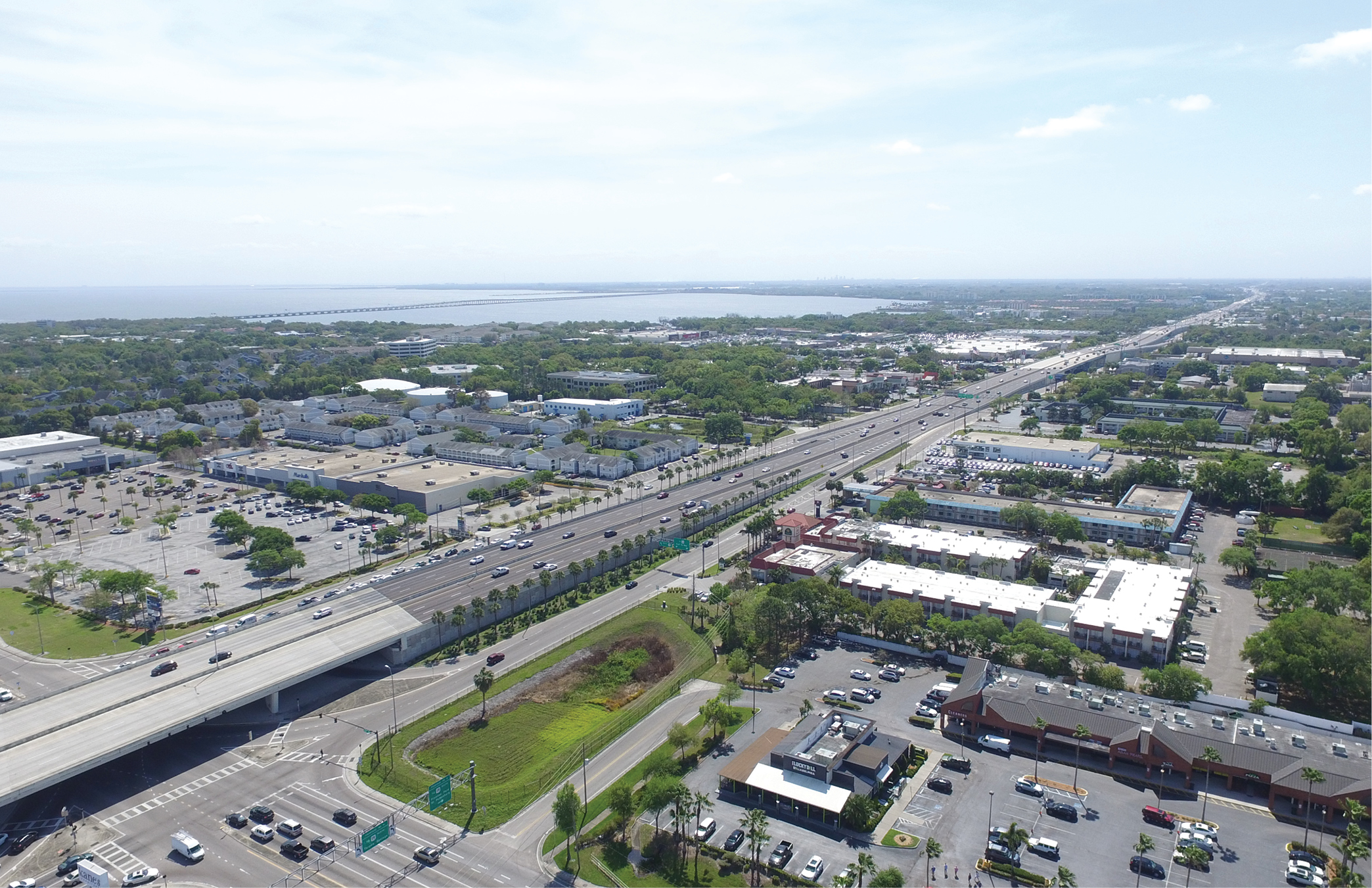
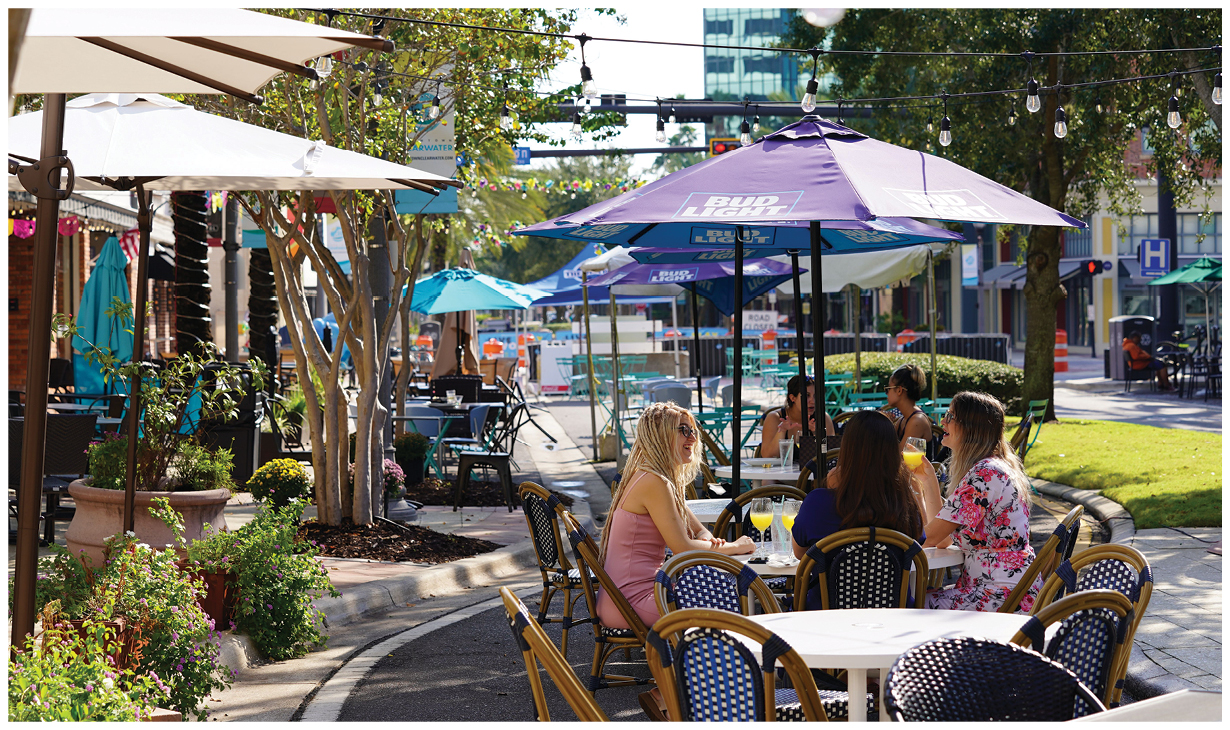
Clearwater in the Tampa Bay Area is one of the many coastal communities making a bold play for corporate and regional headquarters.
Photos courtesy of City of Clearwater
One thing he learned, he said, is that “it is difficult to be a global company and have a headquarters on the West Coast. One reason is communication between the offices. We are in four major regions — Central Asia, Europe, the Middle East and the Americas. We started doing more Zoom and Teams meetings and less traveling. Most people are saying that Zoom is their first choice. Today, that is the new normal. It is more important to be in the right time zone.”
For LeverX, that meant “we needed to go to the East Coast. So, we started looking. Our first office was in Mountain View. In 2008, we decided we needed to be more present in the eastern U.S. We opened an office in Detroit. Then two years later we acquired a company in Pennsylvania. It was close to the SAP Americas headquarters. We ended up having three offices — one in California, one in Michigan and one in Pennsylvania.”
Lozinski said LeverX considered three locations for its new home: Boston; King of Prussia, Pennsylvania; and Miami. “We decided to do it in Miami. In 2019, we had our first customer event in Miami, and it was extremely successful. We received great feedback from our customers,” he says. “Last year, we did another customer event of 100 people, and again we got positive feedback.”
Customer support and the need to do business across multiple time zones drove the final decision, he says. “You need to have the infrastructure — hotels, places for customer meetings and events, airport, etc. Does this location have a pool of talent? One factor is the universities. Do they have research? Do they have programs applicable to us? Do they have STEM programs? Computer engineering is important. Florida has several universities that fit this.”
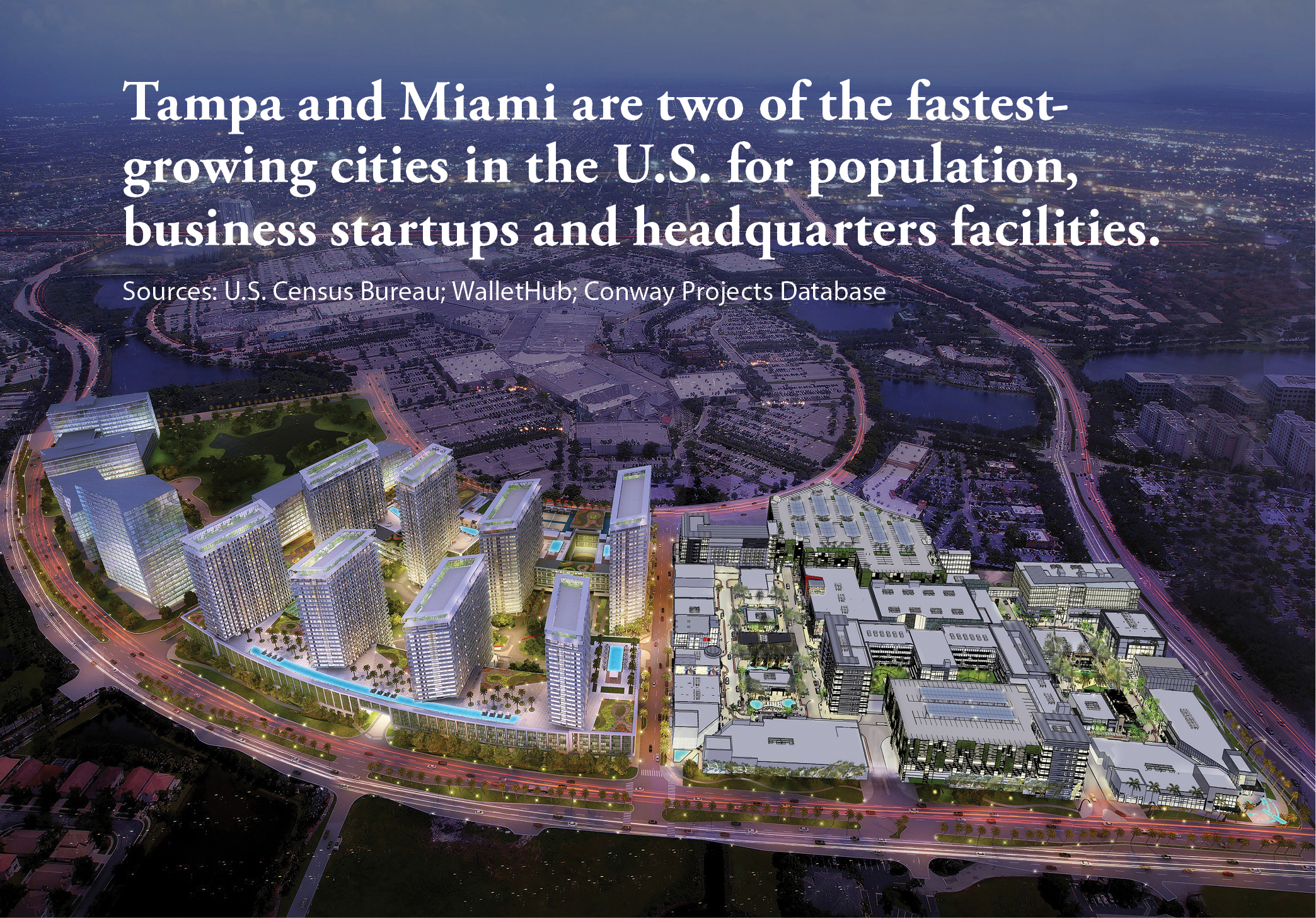
A rendering depicts the rising mixed-use district of Metropica in Sunrise, Florida, on the outskirts of Fort Lauderdale.
Rendering courtesy of City of Sunrise and Metropica
Rolling Out the Welcome Mat
Another factor, Lozinski said, is proximity to customers. “We are a service company,” says Lozinski. “We need a delivery engine. We must be in the right time zone and speak the right language. It must be local. Customer-facing organizations must be local. We have a lot of preferred customers here.”
Entering Miami has opened growth opportunities for LeverX, he adds. “We had not focused on Florida before. Now, we realize we can grow in South Florida — from St. Petersburg to West Palm Beach. Several big tech companies are moving their headquarters here. Several VCs [venture capital firms] from Silicon Valley are opening offices in Miami. One more item was an unexpected benefit — a lot of Europeans spend their vacations here. They like coming here to do business meetings too. The bottom line is that no doubt we made the right decision.”
LeverX moved into the second floor of the Wells Fargo Center in Miami, where it will employ 50 people while growing its global workforce of 1,600.
“We enjoyed huge support from the local authorities. We talked to and met with [Florida Commerce Secretary] Laura DiBella in October of 2022,” says Lozinski. “She said this is a very welcoming environment, starting with the Governor of Florida and the Mayor of Miami and the Mayor of Miami-Dade County. That helped us make the final decision. Of course, we look forward to building our operations in Florida.”
Is Florida the New Factory State? Data Say Yes
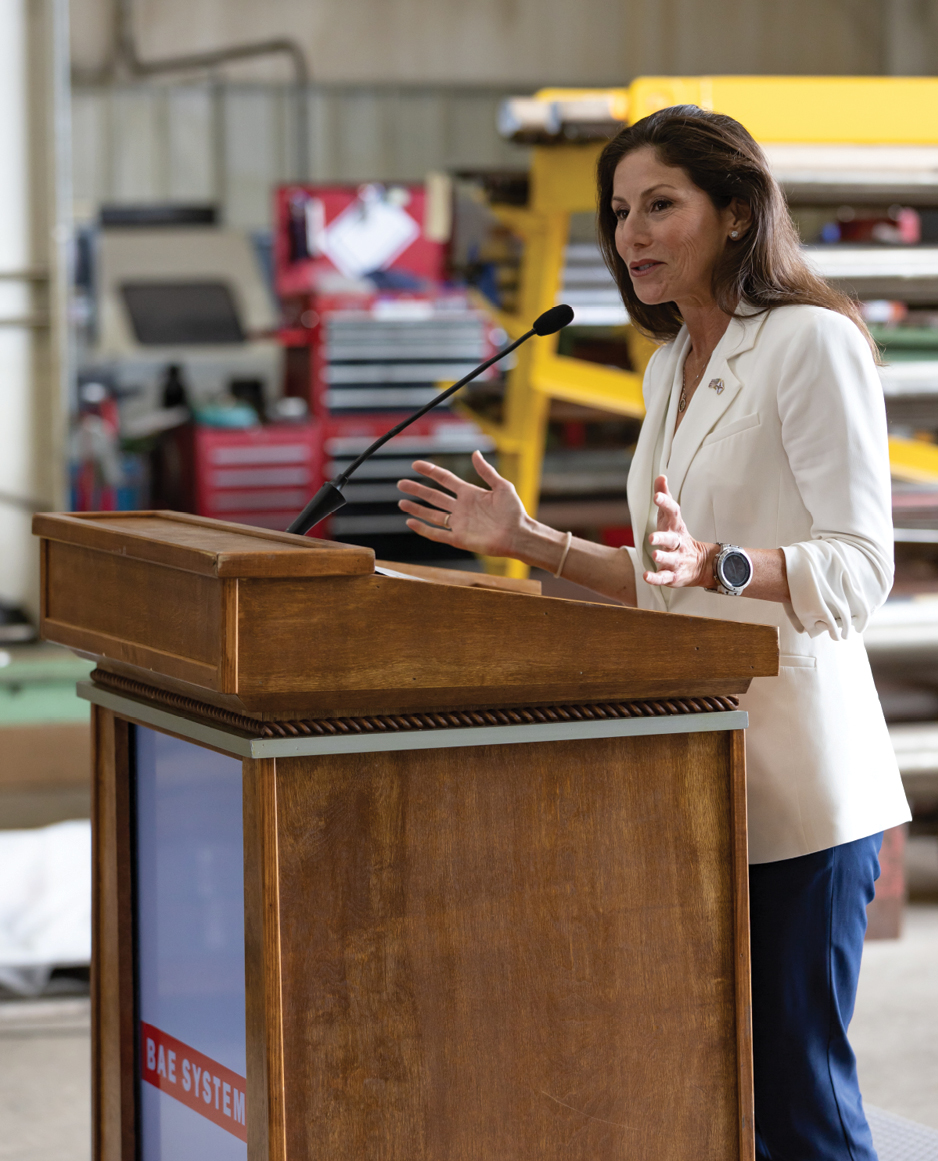 Enterprise Florida CEO and Florida Commerce Secretary Laura DiBella speaks at the groundbreaking of BAE Systems’ $200 million shipyard expansion in Jacksonville.
Enterprise Florida CEO and Florida Commerce Secretary Laura DiBella speaks at the groundbreaking of BAE Systems’ $200 million shipyard expansion in Jacksonville.Photo courtesy of Enterprise Florida
People may not normally think of Florida as a manufacturing state, but new data reveal that America’s sun-drenched peninsula outperforms the U.S. average in producing factory jobs.
CBRE Econometric Advisors identified the U.S. metro areas that benefit from rising manufacturing employment. Remarkably, 22 of Florida’s 24 MSAs outperform the national average in manufacturing job growth.
The study looked at factory job growth from 2010 to 2022 across the country. CBRE found that while the Northeast and large chunks of the Upper Midwest lost manufacturing jobs, Sunbelt states gobbled them up like crazy, led by Florida.
The biggest gainers in the Sunshine State were Orlando-Kissimmee-Sanford, Tampa-St. Petersburg-Clearwater and Palm Bay-Melbourne-Titusville. But smaller markets showed tremendous growth too — places like Cape Coral-Fort Myers, Lakeland-Winter Haven and North Port-Sarasota-Bradenton.
What’s happening? Why are so many factory jobs heading South? To answer these questions, we turned to one of the authors of the study, David Murphy, CBRE executive vice president based in Orlando. “We are seeing more small and medium-sized manufacturers moving to Florida and bringing their manufacturing with them,” he says. “They are taking advantage of the population growth taking place statewide. They are also following the industrial distribution market around Florida.”
A CBRE-produced map shows that the fastest-growing counties for manufacturing employment in Florida hug the primary transportation corridors. These include the counties of Polk, Pasco, Hillsborough, Pinellas, Orange, Duval, Volusia, Miami-Dade, Broward and Palm Beach, as well as smaller counties like Lee, Collier, St. Lucie and Flagler. From Naples to Jacksonville, and from Homestead to Gainesville, you can drive a truck and not leave this top-producing corridor.
“The inland port concept in Florida is going to have a lot of traction going forward,” says Murphy. “The infrastructure going on in Florida is making distribution so much easier. Prior to e-commerce, you did not see a lot of big industrial facilities going into the state. The old model was that Atlanta was the hub. Now you need to have at least 300,000 to 500,000 square feet of space in the middle of Florida. There are 12 million square feet of industrial buildings that will deliver in Florida in 2023. The new supply-chain model requires a ship-to-Florida and a ship-from Florida operation.”
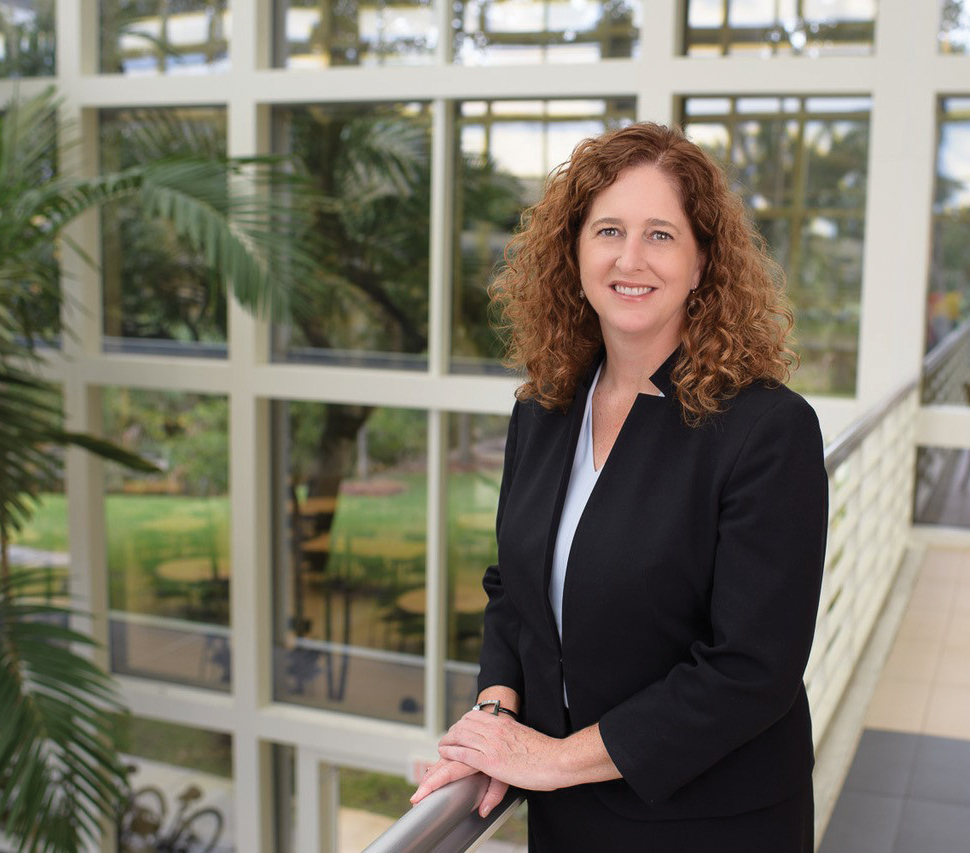
Cathy Chambers, Director of Economic Development, Florida Power & Light Company
When asked if available labor could be a problem, Murphy emphatically said no. “That is a misconception of Florida,” he says. “There is a relatively young demographic that is moving into Florida every year. That is one of the reasons Florida looks so good to manufacturers.”
“There is still so much untapped potential for Florida.”
— Laura DiBella, Florida Secretary of Commerce and Enterprise Florida President & CEO
Laura DiBella, secretary of commerce for Florida and the president and CEO of Enterprise Florida, says her state is just getting started as a haven for factories. “There is still so much untapped potential for Florida,” she says. “We are just now beginning to round out and diversify the state. We will have a lot of opportunities around our rural spine. No matter where you are in Florida, you are never more than an hour to 90 minutes away from a major city or port. Our rural communities are really the future of Florida.”
Case in point is Palatka in Putnam County, about 45 minutes southwest of Jacksonville. Mark Litten, vice president of economic development for the Putnam County Chamber of Commerce, says the Palatka micropolitan area has nearly a billion dollars in project activity considering the county for capital investment deals. Data from POLICOM.com show that, from 2019 to 2023, Palatka was the fastest-rising micropolitan area in Florida in overall economic performance.
Cathy Chambers, director of economic development for Florida Power & Light Company, says rural Florida will benefit from FPL’s expanded Florida First Sites initiative. “This program helps identify additional industrial sites for development in our rural communities,” she says. “We are looking to double the number of sites in that program by the end of this year.” — Ron Starner
Play Ball: A Tale of Three Stadiums in Tampa-St. Pete
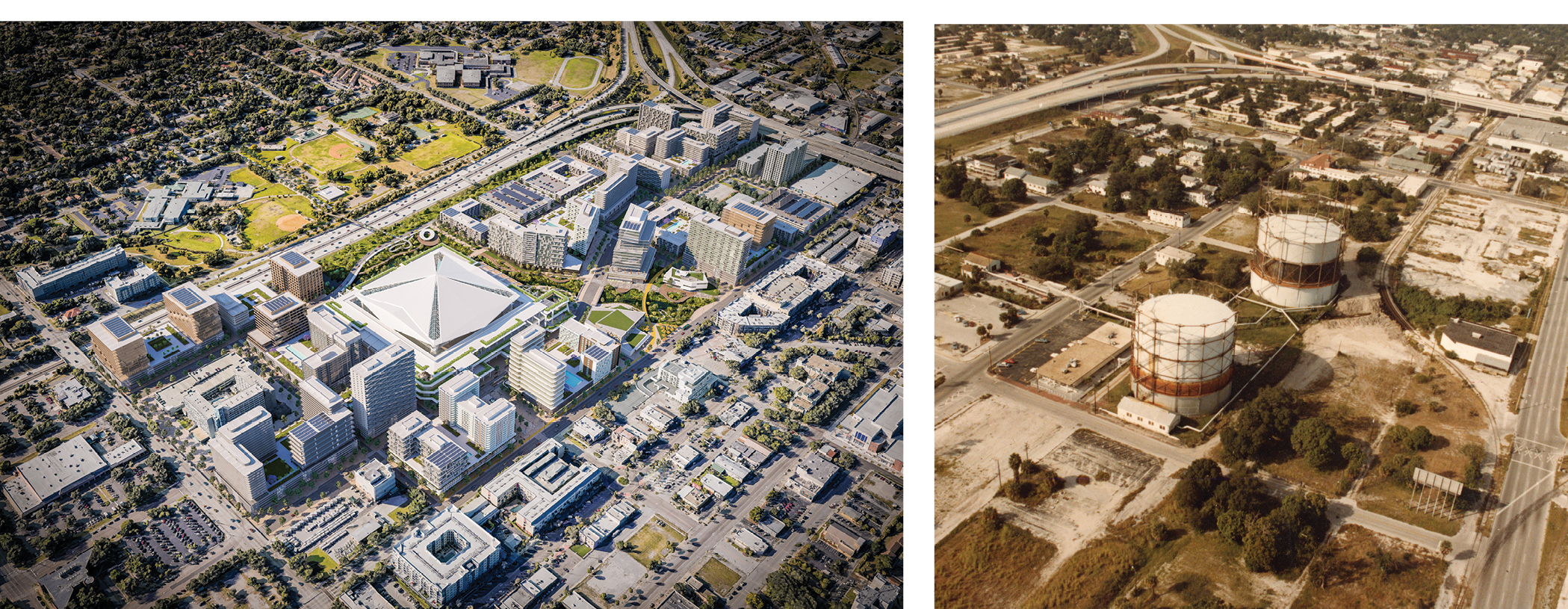
The 86-acre Historic Gas Plant neighborhood that is home to Tropicana Field is now slated for a $4.6 billion redevelopment project.
Rendering courtesy of Hines; photo courtesy of St. Petersburg Museum of History
The only thing hotter this spring in Tampa-St. Pete than Major League Baseball’s Tampa Bay Rays’ 13-0 start to their baseball season is the topic of how their stadium’s neighborhood will be redeveloped.
The 86-acre Tropicana Field site in Pinellas County is now known as the Historic Gas Plant neighborhood to honor the community displaced by the region’s ultimately successful pursuit of Major League Baseball that launched the then-Devil Rays in 1998. The dome — which originally opened as Florida’s Suncoast Dome in 1990 — was first admitted to the Duke Energy Site Readiness program as a redevelopment candidate in 2020. A city administrator called it “a once-in-a-generation opportunity to shape the future of St. Petersburg.” Today, after a reissued RFP process under the administration of Mayor Kenneth T. Welch, it remains so.
In January, Welch announced that a revamped proposal from developer Hines and the Tampa Bay Rays had been chosen. With a total expected investment of $4.6 billion, the plan calls for 5,728 residential units, 600 units of senior living, 1.4 million sq. ft. of office development, a 700-key hotel and 320,000 sq. ft. of retail. The project is anticipated to have an annual economic impact of $1.4 billion, including $656 million in wages and the creation of 5,500 full-time-equivalent jobs.
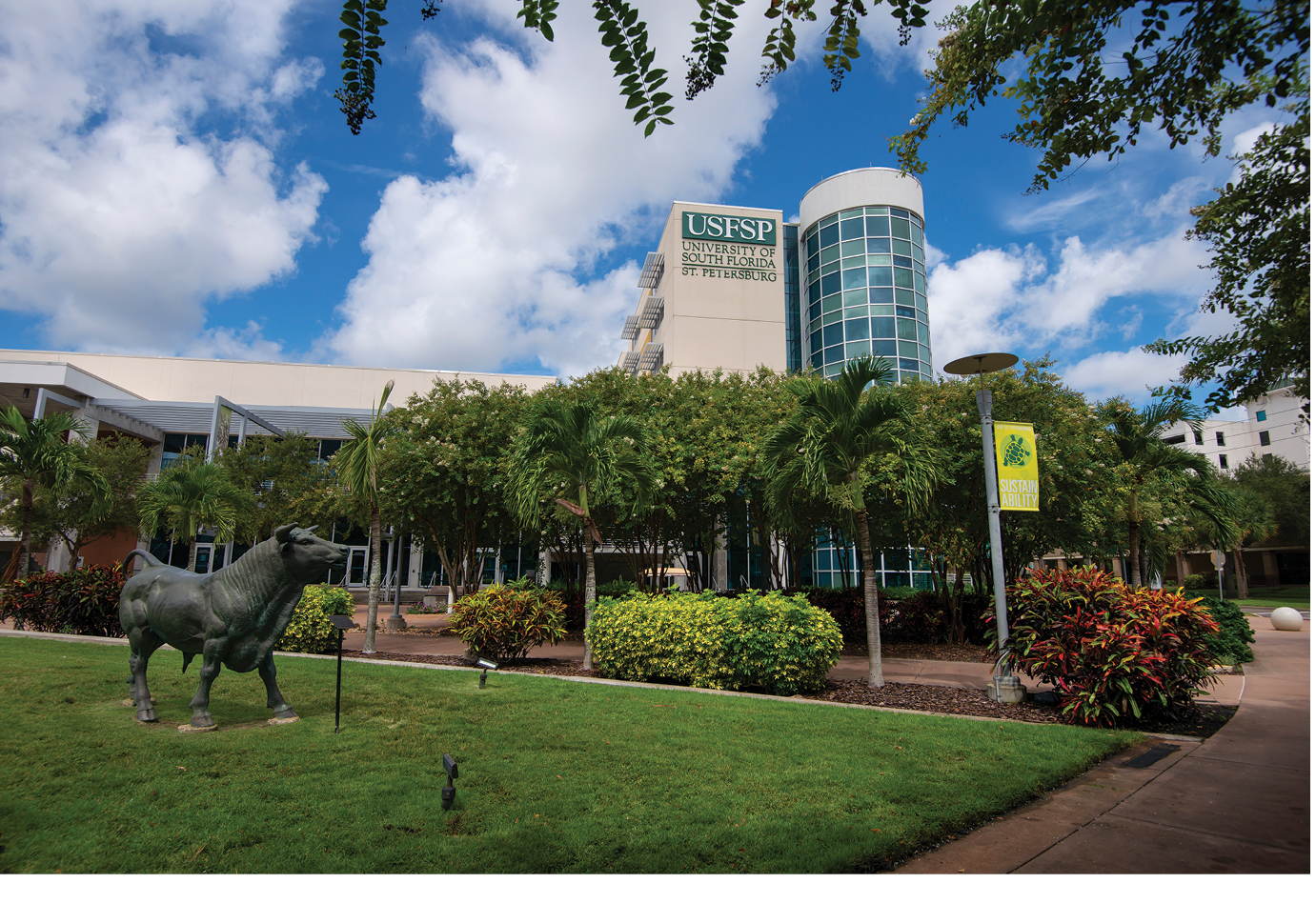
University of South Florida mascot Rocky the Bull poses in front of the Marshall Student Center on campus.
Photo courtesy of USF
It was a proposal endorsed by a number of stakeholders including hotel giant IHG, whose Julienne Smith, chief development officer for the Americas, made note of the potential beyond baseball:
“Your prospective location has close proximity to St. Petersburg’s primary business drivers including the growing sectors in financial services, data analytics, marine and life sciences and creative arts/tourism,” she wrote. “The variety of services being proposed in the Historic Gas Plant District will help support the needs of our travelers whether they are visiting the variety of financial services and other primary businesses in the area or enjoying entertainment like many of the annual Rays game[s].”
“Our position of support comes from our many years of partnership,” wrote Duke Energy Florida President Melissa Seixas in a November 2022 letter that formed part of the proposal. “From the initial days of the team when Florida Power, our predecessor company, had a minority ownership stake in the team through our current corporate partnership today, we have seen the Rays’ demonstrated commitment to the community.”
Another letter of support came from Ronald McDonald House Charities of Tampa Bay, which maintains three houses within walking distance of the stadium.
“Located just south of downtown, we understand how critical the Historic Gas Plant site is to the community and the unfulfilled promises that were made to residents for over 50 years,” wrote Lisa Suprenand, CEO of the organization. “For our charity, affordable housing for the community and for the workforce is key.”
The team’s use agreement at Tropicana Field expires at the end of the 2027 season. Mayor Welch’s office anticipates reaching an agreement with the developers by May 2023.
Venues Make News
In November 2022, the city council approved a plan that will keep the USL’s Tampa Bay Rowdies — now owned by the same group that owns the Rays — playing at historic Al Lang Stadium on the city’s waterfront through at least November 2025.
Meanwhile, the University of South Florida is moving forward with plans to build its own football stadium so that it will no longer have to play all its home games at the Tampa Bay Buccaneers’ Raymond James Stadium in Tampa where the university has played all its games since launching a football program in 1998.
The USF Board of Trustees in March approved plans to move forward with the projected $22 million design phase of the stadium, which would open in fall 2026.
No less a figure than Jeff Vinik, owner of the Tampa Bay Lightning and co-developer of Water Street Tampa, has said of the university stadium he’s contributed to, “An on-campus stadium at USF will be a game-changer, literally and figuratively, for the university and our entire Tampa Bay community … The Bolts enjoy the best fan and community support in the NHL, and in just a few short years, the Bulls will experience that in a completely new way in their campus home.” — Adam Bruns
Disney’s Story Ending?
What was supposed to be a jubilant year as The Walt Disney Company celebrates its 100th anniversary has been soured by a power struggle between the company and Florida Governor Ron DeSantis.
DeSantis in late February signed into law legislation that ends “the corporate kingdom of Walt Disney World.” by amending the charter of the Reedy Creek Improvement District (RCID), formed in 1967 to support Disney World’s development.
A war of words and legal maneuvers has played out since former Disney CEO Bob Chapek spoke out against the Parental Rights in Education legislation championed and signed into law by Gov. DeSantis last year, which prohibited classroom instruction on sexual orientation and gender identity through grade three. (An extension of that law’s reach through high school was signed in April.)
In February, the RCID board inserted a declaration of restrictive covenants one day before legislators voted for the district to transfer to state control under the new name of Central Florida Tourism Oversight District (CFTOD).
Iger Doesn’t Back Down
“We love the state of Florida,” Bob Iger, CEO of The Walt Disney Company, said at the company’s annual meeting in April. “We’ve also respected what the state of Florida has done for us. It’s kind of been a two-way street. But a year ago the company took a position on pending Florida legislation. And while the company may not have handled the position it took very well, a company has a right to freedom of speech just like individuals do.”
Iger said the anger-fueled retaliation by DeSantis “just seems really wrong to me against any company or individual but particularly a company that means so much to the state you live in. To put that in perspective, we have over 75,000 employees [in Florida], countless thousands of indirect jobs have been created, about 50 million visitors will go through our gates this year alone, about 8 million of them from outside the U.S. And we are the largest taxpayer in the state.
“We are currently planning to invest approximately $17 billion in Disney World over the next 10 years,” Iger said. “And those investments we estimate will create 13,000 new Disney jobs and thousands of indirect jobs,” he said, adding, “any action that thwarts those efforts simply to retaliate for a position the company took sounds not just anti-business, but it sounds anti-Florida.”
Disney’s expansion in the state also includes a new 1.8-million-sq.-ft. regional campus at Lake Nona in Orlando that will serve as the headquarters of its Parks, Experiences and Products division and will include the transfer of 2,000 jobs from California.
On April 17 Gov. DeSantis took action to nullify RCID’s eleventh-hour agreements: “Disney’s corporate kingdom is over,” he said.
On April 26, Disney sued DeSantis over his “patently retaliatory, patently anti-business, patently unconstitutional” campaign against the company.
And the lawyers lived happily ever after. — Adam Bruns
